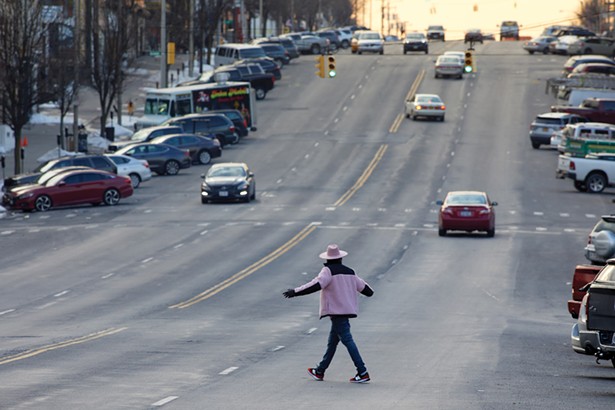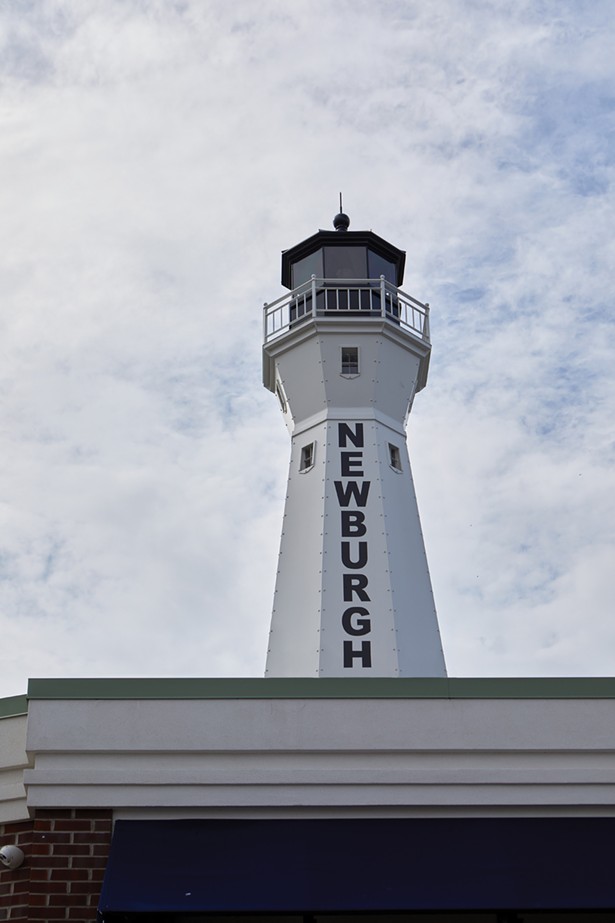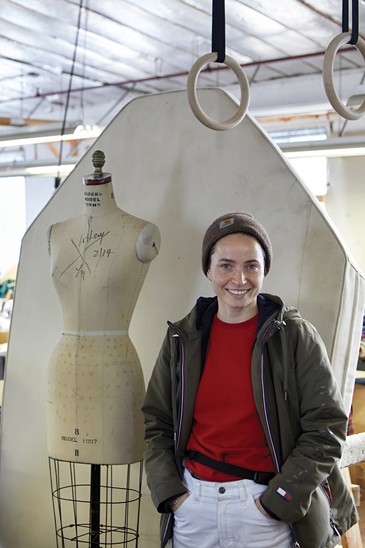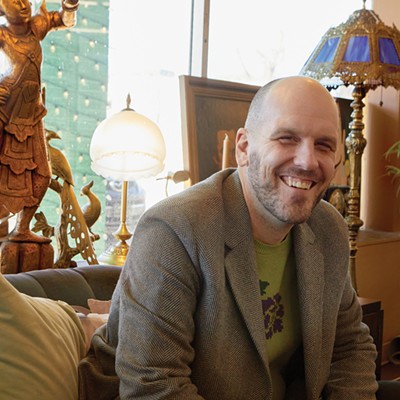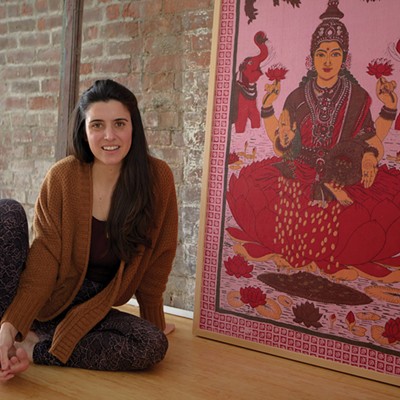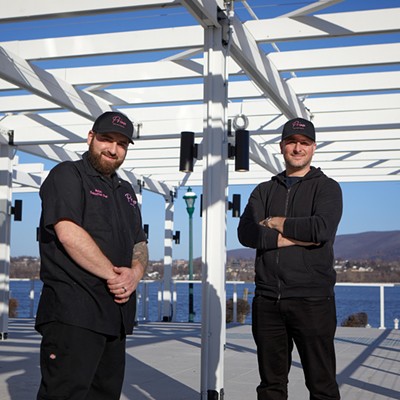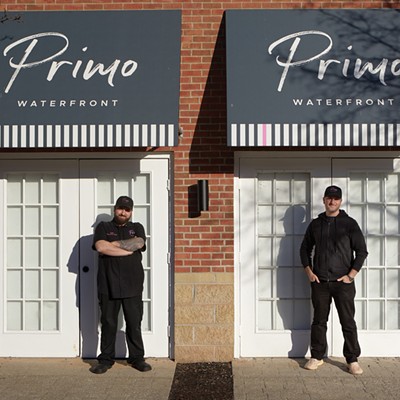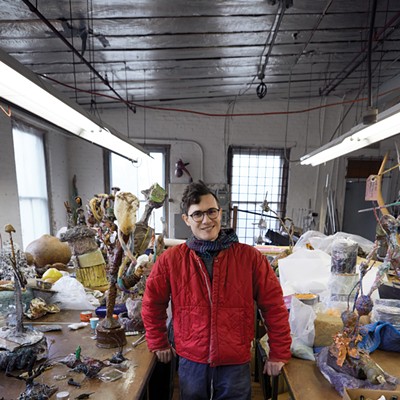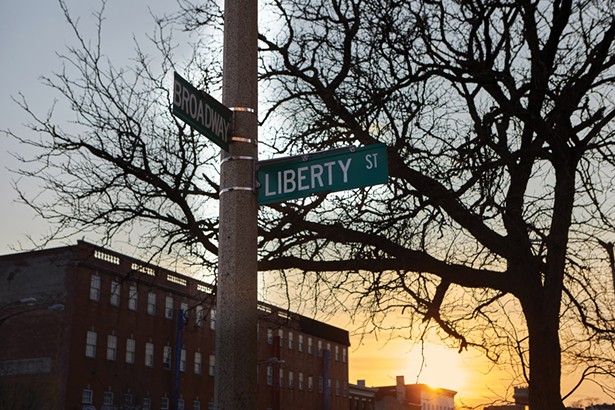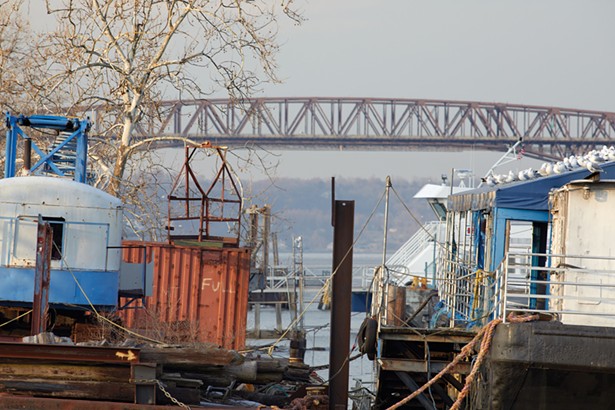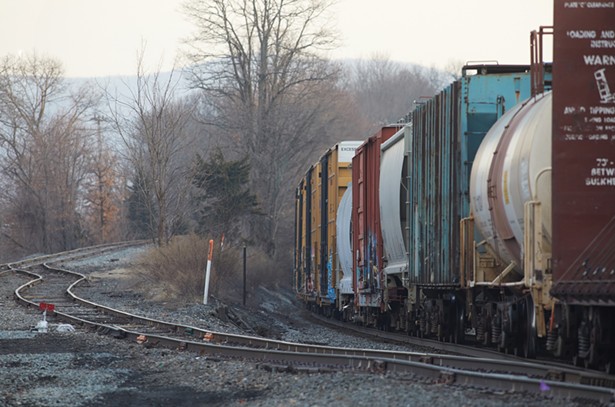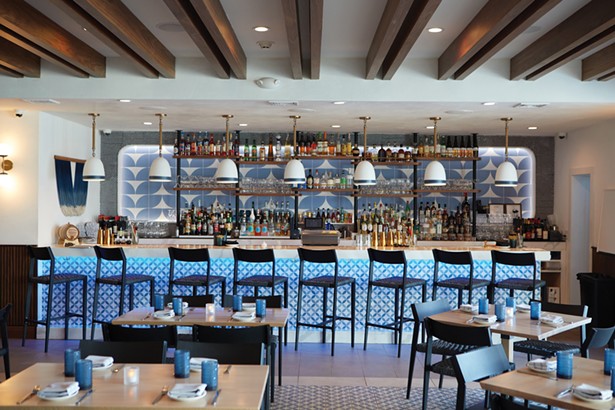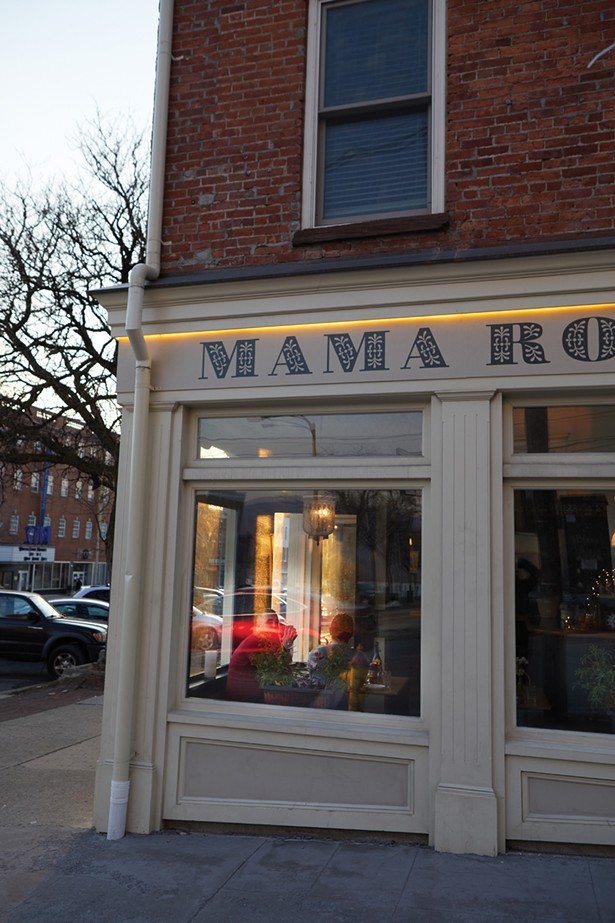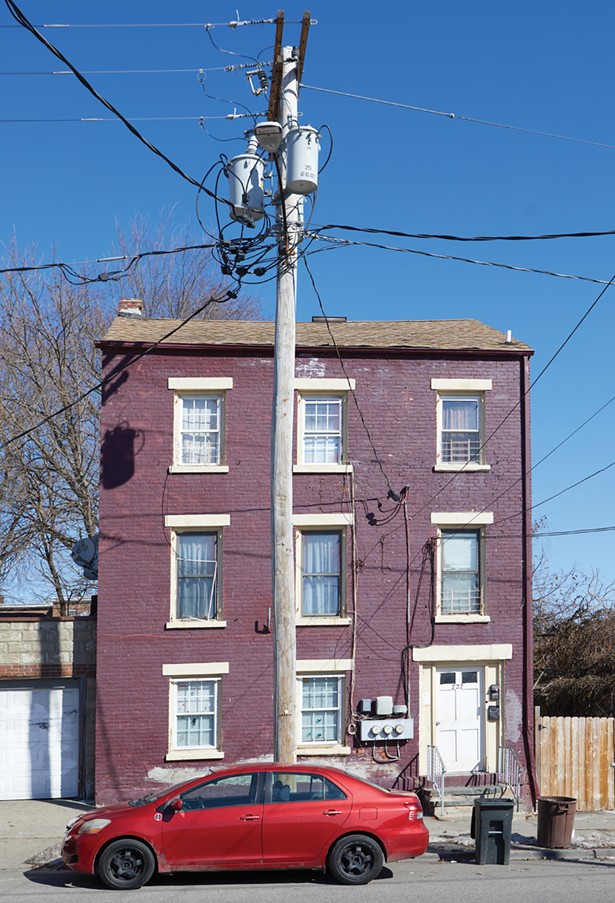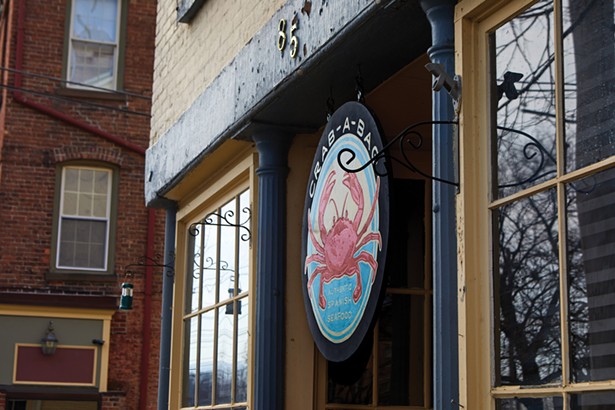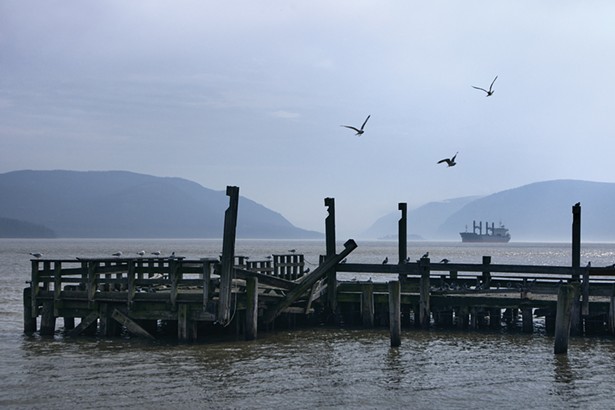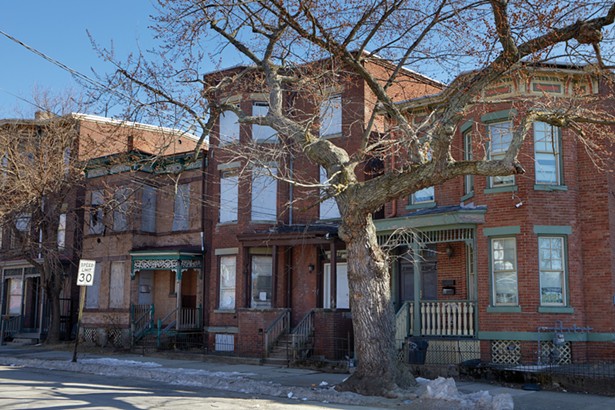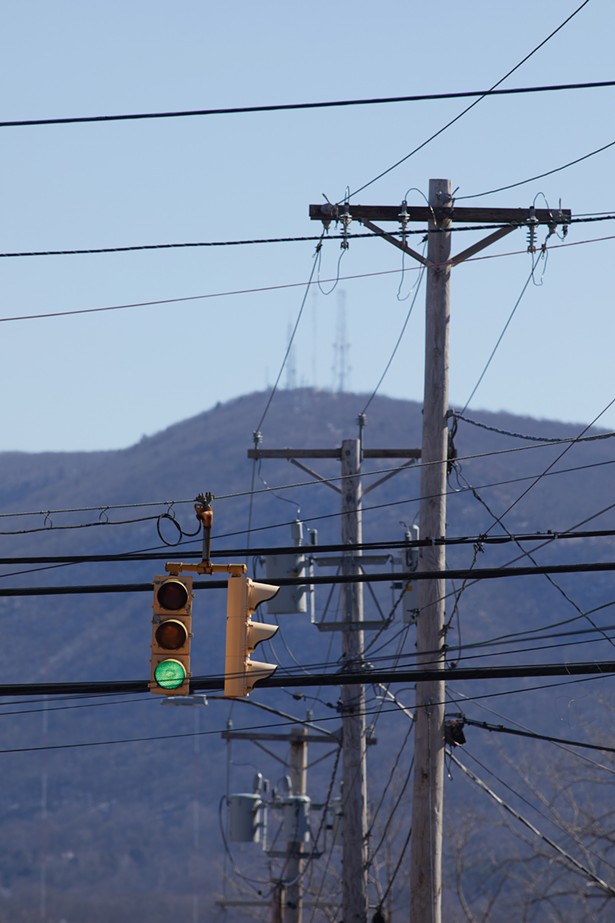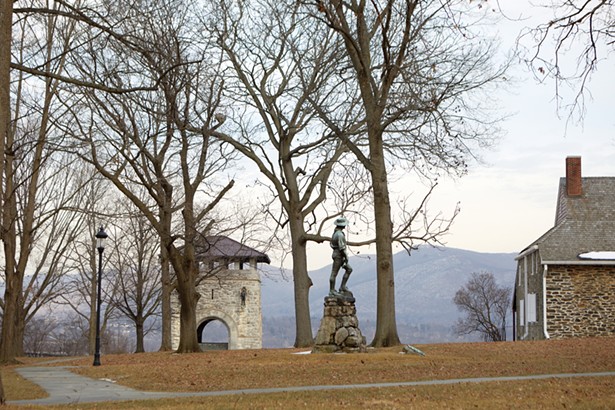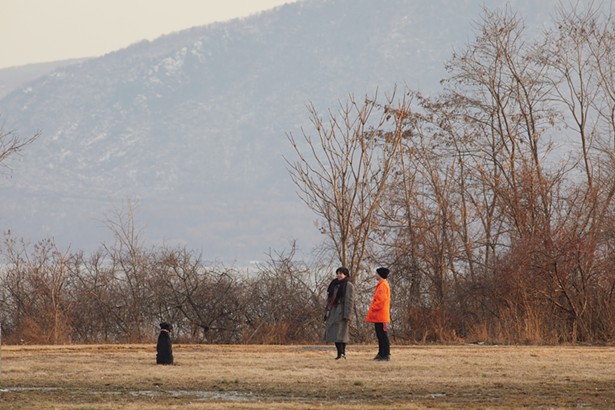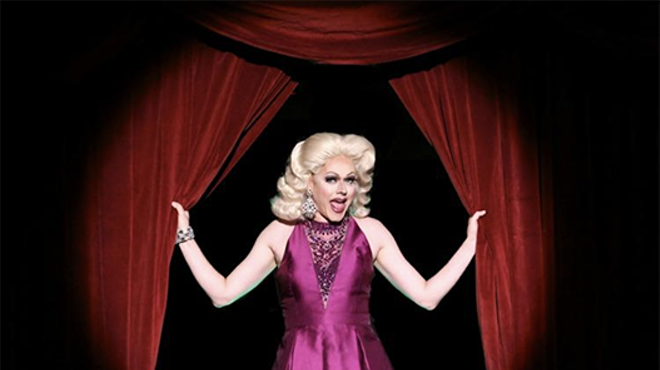It’s a story almost as old as the walls and streets themselves. A story that has played out in now desirable New York neighborhoods like Williamsburg and elsewhere. A story that goes like this.
Around the turn of the 20th century, thanks to thriving industry, an area becomes a magnet for newly moneyed classes, who erect blocks of beautifully designed, brownstones and brick tenement buildings. After a couple of generations, the industry goes away and the moneyed classes move out. Poverty and crime set in, and for decades, buildings stand gutted, crumbling, and vacant.
In search of creative space and cheap rents, artists eventually move in alongside the underserved people already living there. Galleries, cafes, bars, nightclubs, restaurants, and specialty shops soon open. A few of the townhouses and tenements get renovated by a handful of newcomers who have enough faith in the neighborhood to buy there. Soon, more outside people, attracted by the district’s lively culture and character, want to live there as well. Developers and landlords notice, rents and property values skyrocket, the poor and the pioneers are forced out, and the soul of the sector vanishes as it becomes, essentially, an exclusive community and a high-end mall with sidewalks. The end.
But Newburgh, long one of the Hudson Valley’s most culturally vibrant but economically and crime-challenged cities—a 2011 report declared it the murder capital of New York State—has learned from watching the overly gentrified outcomes of other towns and is working to write a different kind of ending for its own story. And right now, thanks to the efforts being put forth by Newburgh’s residents and advocates, it’s increasingly looking like that ending could be a happier one.
New Parts from Old
“I kiss the dirt every day and say to myself, ‘Where else could I have a space like this?’,” says rising young sculptor Daniel Giordano, who was born and raised locally and makes his surreal works in what was once his grandfather’s garment factory at the intersection of Liberty Street and Gidney Avenue.“It takes an entire village to bolster an artist and make them successful, and I feel like I’m getting that [in Newburgh]. My work is informed by Newburgh itself; I use a lot of industrial detritus that I find when I’m walking along the old waterfront factory areas. The larger arts scene is more decentralized now because of the internet—you don’t have to live in New York now to get your art known. And with galleries like Visitor Center, Elijah Wheat Showroom, Ann Street Gallery [run by nonprofit redevelopment group Safe Harbors of the Hudson], the arts scene here is burgeoning.”An anchor of Newburgh’s arts activity is the Wherehouse, the trailblazing restaurant/performance space that established the now-flourishing Liberty Street creative district.
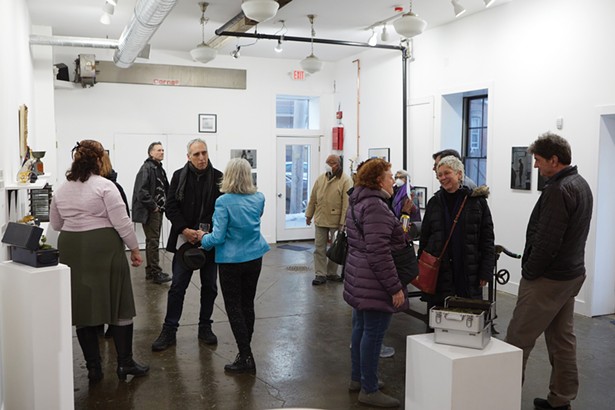
The City of Newburgh is perched on Orange County’s eastern edge, in the Hudson Highlands and directly across the river from Beacon. Its earliest recorded inhabitants were the Waorneck people, who belonged to the larger Lenape tribe. A small group of English-sponsored Palatine refugees arrived to settle the area in 1709, and in 1752 future acting Governor Cadwallader Colden (grandfather to New York City’s 54th mayor, Cadwallader D. Colden) named it after Newburgh, Scotland (his native country). Hasbrouck House, where George Washington was headquartered during the final year of the Revolutionary War, and the Newburgh Colored Burial Ground are two of the city’s prominent historic sites.
“When I first became involved with Newburgh Illuminated, in 2015, it was hard to find businesses, musicians, or vendors who wanted to be part of it,” says Paul Ernenwein, a Newburgh native who chaired the Newburgh Illuminated board for two years and now serves as one of its officers. “But now, as we’re coming out of the lockdowns, people are anxious to be involved. And so many newer residents have moved to the area and are interested in getting involved as well.”
Back in Business
One of those newer residents is Italian-born yoga teacher Bibi Lorenzetti, who runs Newburgh Yoga Shala. “I’d been living in Brooklyn for nine years and was getting burned out from that,” she says. “My husband and I were driving around, and we sort of stumbled on Newburgh and we really liked it. We found out the city was selling properties it owned, cheaply, to qualified new home buyers, and we bought a house here in 2018. I taught classes in our garage for a while, then I had a baby. I’d promised myself I wouldn’t open a studio. [Laughs.] But I went to look at this space on Liberty Street for a friend who was interested in it, and I fell in love with it. The interior reminded me of ashrams in India. I asked my astrologer if I should open a studio and he said, ‘Yes!’ For our soft opening, my partner Austin Dubois and I had a block cleanup gathering with [local social advocacy group] Melanin Unchained. We had our first class in February 2020.”Other new businesses revitalizing Newburgh’s entrepreneurial landscape include Toasted, an innovative sandwich shop, and Primo Waterfront, which serves Italian coastal cuisine; Spirits Lab craft distillery; and coworking/loft-living facility Wireworks. They join older local institutions like Liberty Street Bistro and Newburgh Flour Shop, whose owner and executive chef, Michael Kelly, graduated from the nearby Culinary Institute of America and serves on the city’s planning and industrial development boards; Newburgh Antique Emporium, which has two locations; and Anna’s restaurant, which has been offering Greek American fare since 1985 (its owner/manager, Peter “DJ Pete Pop” Papageorgantis, spins R&B and soul 45s for “Funky Brunch” Sundays at Mama Roux restaurant, part of a retail/residential building at 96 Broadway that was restored with assistance from the Newburgh Industrial Development Agency).
Greenlighted recently by the municipality, after a request for proposals, is the coming makeover of three adjacent disused buildings on Grand Street acquired by Orange County—a former American Legion Hall, YMCA, and Masonic Temple—into a $25 million, 80-room boutique hotel/events facility with a spa, bar, and restaurant. The Foster Supply hospitality group, which manages six historic properties-cum-hotels in the Western Catskills, was awarded the right to buy and renovate the structures as part of a PILOT (payment in lieu of taxes) contract with the city.
Sims Foster, who founded Foster Supply with his wife, Kirsten Foster, is emphatic about his firm’s belief in Newburgh and its desire to improve life in the city. “There hasn’t been a hotel of any substance in Newburgh in a generation,” he says. “Newburgh has great energy. And the architecture, history, and convenient location [of the complex] will attract people.” The project, which received a $1.25 million development grant from the state, is expected to create 80 jobs and $1.3 million in annual tax revenues. “[The project] will have a positive, outsized impact and help Newburgh write its next chapter,” says Sims. “And help it become what it once was, in a new iteration.”
Among the city’s downtown architectural jewels are the 1883 Ritz Theater (where, in 1941, Lucille Ball made her stage debut) and the 1923 Newburgh Savings Bank building, which housed the Newburgh Karpeles Manuscript Museum until the passing of founder David Karpeles in January. But many historic structures weren’t lucky enough to evade the wrecking ball. “Around 800 historically significant buildings here were wiped out here during urban renewal,” says Reggie Young, whose Hudson Valley House Parts architectural salvage store opened in 2018 and is preparing for Newburgh’s growth and prosperity by employing and training locals in the restoration field.
“As a preservationist, it’s very exciting to see how much historic architecture is being rebuilt right now," he says. "We’re planning workshops on steam radiators and plumbing, brownstone and window renovation, working with plaster and mortar, and other subjects.” A member of the city’s architectural review commission, he adds that “Newburgh has the state’s largest historic district outside of New York City, but also the lowest rate of home ownership in the Hudson Valley. A lot of investors have been coming in [public and private investments in Newburgh since 2019 total more than $144.6 million, with $128 million more expected in the next few years], which has its good and bad sides, and we’re dealing with gentrification. We want to get more people to be able to own their own homes, and not see poorer people pushed out.”
Making Room
According to a housing needs study by economic justice group the Leviticus Fund, nearly one third of Newburgh’s population lives below the federal poverty level. A major victory in the effort to ensure that the city, in the face of a nationwide housing shortage, remains a place for all economic echelons of citizens came with its passing of Good Cause Eviction legislation last fall. The laws are designed to prevent “exorbitant and predatory” rent increases and lay out specific causes that landlords must prove when seeking to evict tenants (similar legislation has been passed in Albany, Beacon, Kingston, and other cities).“No one in America should be evicted without good cause,” Newburgh Mayor Torrance Harvey, an accomplished actor, poet, and motivational speaker outside of his governmental duties, told the Middletown Times Herald-Record in March. “Decent housing is a human right, not a privilege.”
That month, despite considerable public support for the new laws, a small group of landlords—most of them linked to the same Manhattan address—filed a lawsuit against the city over the legislation, decrying it as local government overreach that goes against their constitutional rights as business owners. Many supporters of Good Cause legislation, such as area grassroots social justice group For the Many (formerly Nobody Leaves Mid-Hudson), are optimistic about the city’s upholding of its decision but are nonetheless pushing for state-wide adoption of the laws, which are already in place at the state level in New Jersey, California, and Oregon.
Last year Newburgh submitted its fifth consecutive bid for one of New York State’s $20 million Downtown Revitalization Initiative grants, although as of this writing it’s unclear when the state will announce the grant winners. But if the city is awarded the funds, its plans call for planting trees along Broadway, creating public bicycle and transit lanes, and further revitalizing its bustling waterfront restaurant district by reconstructing the damaged Newburgh Landing public pier.
“Part of what makes Newburgh a great place to live is that it’s an urban area with a lot of amenities, but it also has mountain and river views,” says Cherisse Vickers, the executive director of the Newburgh Industrial Development Agency. “I grew up on Long Island, and that’s not something that we had there. I really enjoy the diversity, meeting and talking with people from different backgrounds. Moving to Newburgh is a chance to grow and really be part of a change that’s happening. I’d say that whatever your niche is, there’s room for you here.”
To that end, the IDA is at the forefront of the drive to make room for residents and businesses while preserving the town’s stock of historic buildings. The organization’s ventures include the above-mentioned 96 Broadway and Foster Supply hotel projects; the Foundry at Washington Park, a 31-unit condominium facility in a renovated brick industrial building; and a planned housing site at the former Clinton Hotel at 134 Washington Street.
In a city whose 2019 unemployment rate was 4.9 percent, the Newburgh Free Library, which recently hosted a workforce development summit that attracted over 30 participating organizations and launched its Career Smart @ Your Library program, is also doing its part to help.
“We’re looking for new ways of positioning the library in the digital world, so that we can be a catalyst for change in the community and a connector for people with questions,” explains Mary Lou Carolan, the library’s executive director. “The Career Smart program offers assistance with job training, resume building, computer literacy, and more. We recently hosted students from the nearby Highpoint [a workforce center for women of color] and [RUPCO-run] YouthBuild programs, and we’re planning another summit event for May. The aim is to create a new technology hub in Newburgh while also being a resource center and local historical source.”
“I’ve heard my whole life about how horrible Newburgh was, but it’s one of the most beautiful and historic places in the whole Hudson Valley,” says Ernenwein, whose Austrian Jewish family has been in the area for five generations. “And during the Newburgh Illuminated festival, when we really get to show off our town and I see the smiles on the faces of all the people who are out having fun, I get choked up. Now’s an extremely exciting time for Newburgh.”







